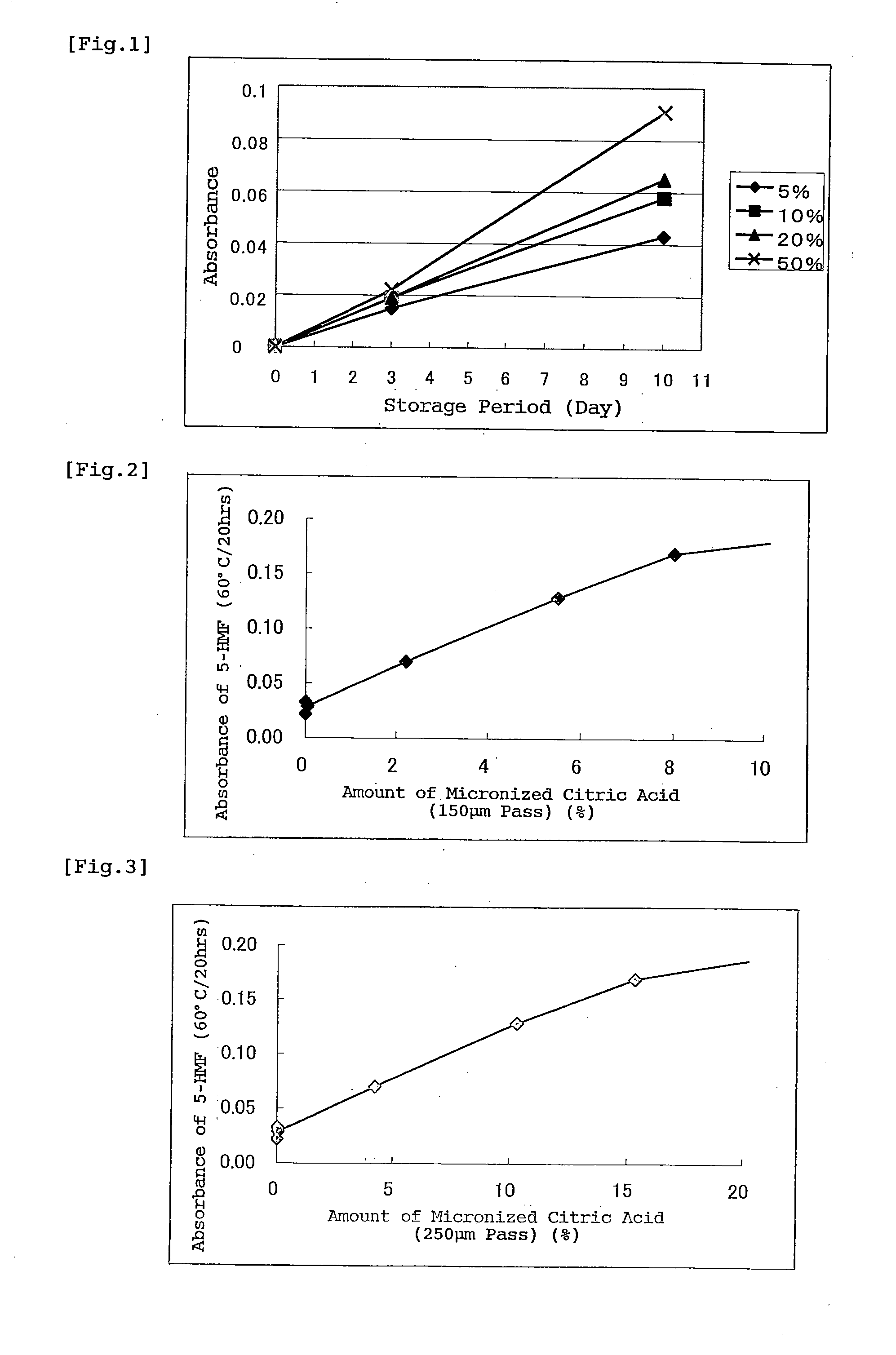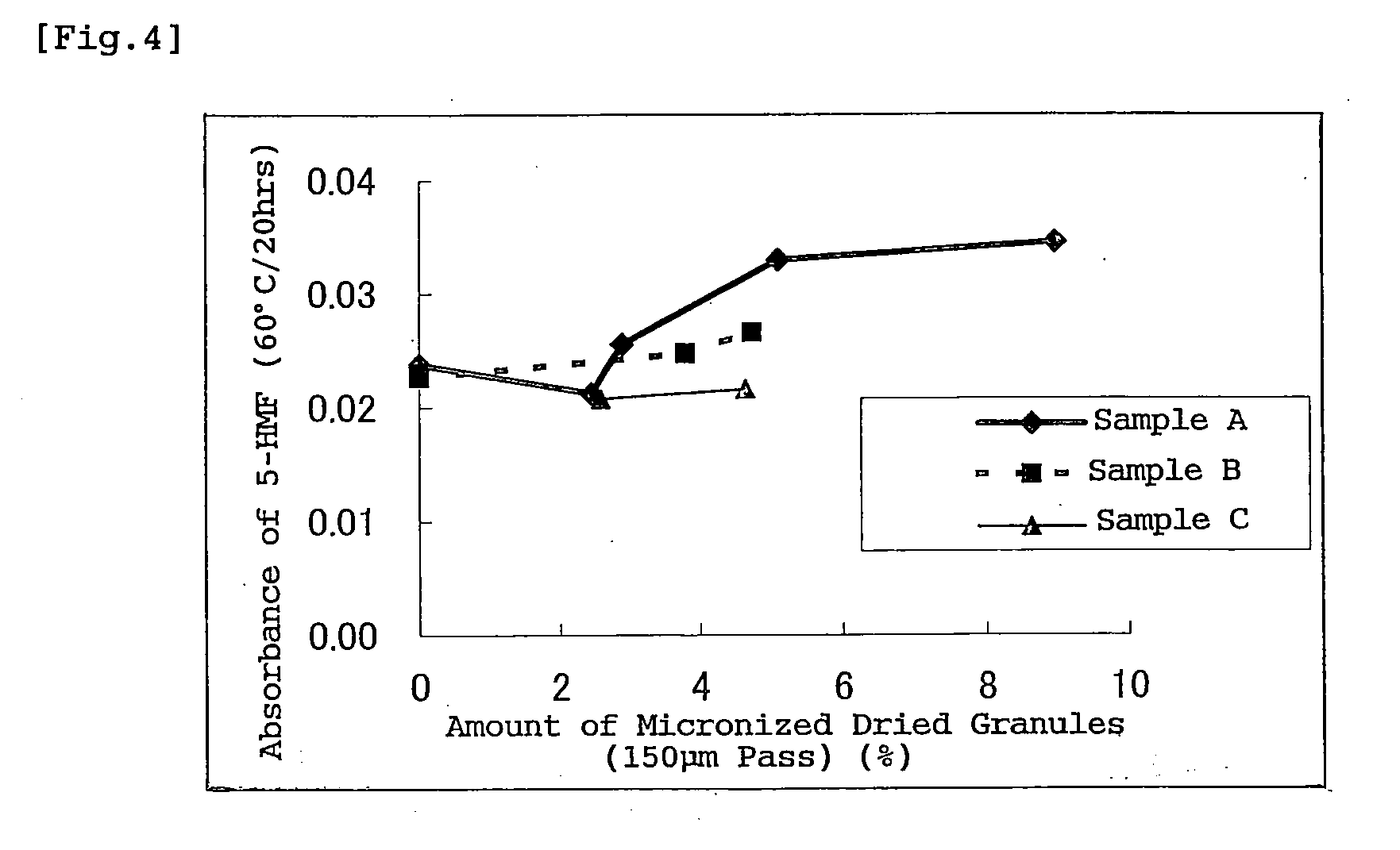Solid preparation for dialysis
- Summary
- Abstract
- Description
- Claims
- Application Information
AI Technical Summary
Benefits of technology
Problems solved by technology
Method used
Image
Examples
working example 1
Formulation of a Solid Preparation for Dialysis
[0074]In a vertical granulator (VG-25 by Powlex Co., Ltd.), 9429 g of sodium chloride, 228 g of potassium chloride, 338 g of calcium chloride, 42 g of sodium citrate and 2305 g of glucose were mixed. The mixture was kneaded and mixed while a binder solution made from 158 g of magnesium chloride dissolved into 11 L of water (1 percent) was being added. Then, the obtained granules were dried in a fluidized bed dryer.
[0075]Subsequently, to 2848 g of above dried granules, 34 g of citric acid whose less than 5 percent of particles were 150 μm or less in diameter was added in a V-type mixer to obtain a solid preparation for dialysis of the invention.
PUM
| Property | Measurement | Unit |
|---|---|---|
| Diameter | aaaaa | aaaaa |
| Diameter | aaaaa | aaaaa |
| Fraction | aaaaa | aaaaa |
Abstract
Description
Claims
Application Information
 Login to View More
Login to View More - R&D
- Intellectual Property
- Life Sciences
- Materials
- Tech Scout
- Unparalleled Data Quality
- Higher Quality Content
- 60% Fewer Hallucinations
Browse by: Latest US Patents, China's latest patents, Technical Efficacy Thesaurus, Application Domain, Technology Topic, Popular Technical Reports.
© 2025 PatSnap. All rights reserved.Legal|Privacy policy|Modern Slavery Act Transparency Statement|Sitemap|About US| Contact US: help@patsnap.com


